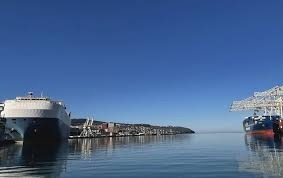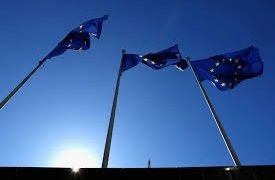Europeian nations, led by the United Kingdom, say they stand ready to send troops into Ukraine immediately once a full ceasefire is agreed with Russia. UK Defence Secretary John Healey announced that the UK and partner states have military plans already “ready from day one.”
Background: Planning and Coalitions
Healey revealed that the UK has joined efforts with more than 30 countries in what’s been dubbed the “Coalition of the Willing.” Together, they have developed operational scenarios for deployment once a ceasefire takes effect. At least 200 military planners are reported to have prepared detailed plans.
In March 2025, French President Emmanuel Macron confirmed around 26 countries had pledged to contribute troops, by land, sea or air, to assist Ukraine post-ceasefire.
While many European defence ministers affirmed their support for Ukraine, few had publicly committed to immediate troop deployment—making the UK’s announcement particularly striking.
Healey’s Statement: What He Said
On August 15 2025, Healey told the BBC:
“In the circumstances of a ceasefire we’re ready to put UK boots on the ground in Ukraine. They are ready to go, they’re ready to act from day one.”
He clarified that British forces would have the right to defend themselves if challenged. He also stressed that the UK’s role goes beyond observation—it is to stand with Ukraine “on the battlefield and in the negotiations.”
Furthermore, Healey indicated the UK expects to spend “well over £100 million” preparing for any deployment, depending on a negotiated peace deal.
Scope and Mission of the Force
Europe’s vision for the post-ceasefire mission includes two primary objectives:
- Stabilise Ukraine via a multinational force that deters renewed Russian aggression.
- Support Ukraine in rebuilding defence capabilities and maintaining safe skies and seas.
Although troop numbers are not fixed, some media cite estimates of up to 25,000–30,000 personnel across contributing nations.
Key elements include:
- Training and restructuring of Ukrainian forces.
- Peace-keeping in strategic areas rather than direct frontline engagement.
- Combined air and maritime components to control threats and preserve transport routes.
Why Now? The Timing of the Announcement
Several converging factors explain the timing of this declaration:
- A planned summit between U.S. President Donald Trump and Russian President Vladimir Putin in Alaska raised expectations of ceasefire talks. Healey’s remarks appeared to anticipate such a deal.
- Growing concerns in Europe over potential U.S. draw-down of military commitments spurred greater European leadership on Ukraine’s security.
- Ukraine continues to press for clear security guarantees in any future peace deal, especially given Russia’s recent advances and drone attacks.
Reactions and Diverging Views
Supportive:
- Ukraine’s leadership responded cautiously positively, viewing European security guarantees as vital.
- Many smaller European states welcomed efforts to form a strong post-war security framework.
Reservations:
- Germany and other major European powers remain cautious about deploying troops without a robust mandate and U.S. backing.
- Analysts warn that the logistical, political and legal hurdles of deploying troops near Russia’s border complicate the plan.
Challenges and Risks Ahead
Political & Legal:
- Any deployment would need Ukraine’s consent, an operational mandate, and clarity on rules of engagement.
- Russian opposition and possible escalation remain major concerns.
Operational:
- Mobilising hundreds or thousands of troops quickly into a war-torn country is complex.
- The mission must transition from combat to peacekeeping effectively.
Strategic:
- A weak ceasefire that collapses could draw coalition troops into renewed fighting.
- Without U.S. commitment (e.g., air or missile defence), Europe’s front-line credibility may suffer.
Next Steps: What to Watch
- Ceasefire negotiations: The trigger event for deployment.
- Member state contributions: Countries will likely announce force levels and capabilities.
- Legal frameworks: NATO vs. UN mandate, rules of engagement, status of forces.
- Ukrainian position: Kyiv will push for guarantees of sovereign defence and clarity on Western roles.
- Russia’s reaction: Moscow may resist foreign troops at its border and could respond with military or diplomatic pressure.
Broader Implications
The announcement marks a shift: Europe signalling it will not simply return to business as usual once Ukraine and Russia sign an armistice. Instead, the continent appears ready to take an active stabilisation role. This could reshape European defence postures and reduce reliance on the U.S.
However, it also raises questions:
- Will Europe sustain long-term troop commitments?
- How will this reshape NATO’s strategic dynamic?
- Could this mission draw Europe deeper into a security commitment decades long?
Conclusion
John Healey’s declaration that the UK – alongside a coalition of dozens of countries – stands ready to deploy troops to Ukraine once a ceasefire is agreed marks a significant moment in the war. Although the deployment remains contingent on diplomatic breakthroughs, the planning appears advanced and the political message clear: Europe intends to take responsibility for Ukraine’s post-war security framework.
Nevertheless, serious challenges remain. Execution, legal bounds, logistics, and Russian response will test whether this readiness translates into real-world impact. For now, the message is firm: Europe is not waiting — it is preparing to act.







